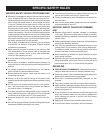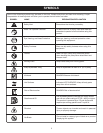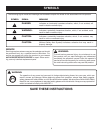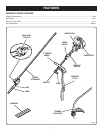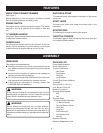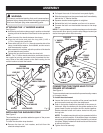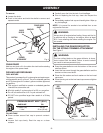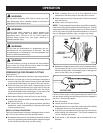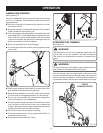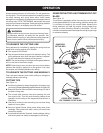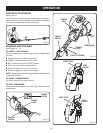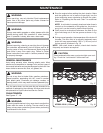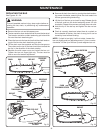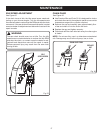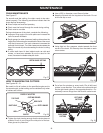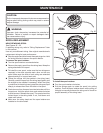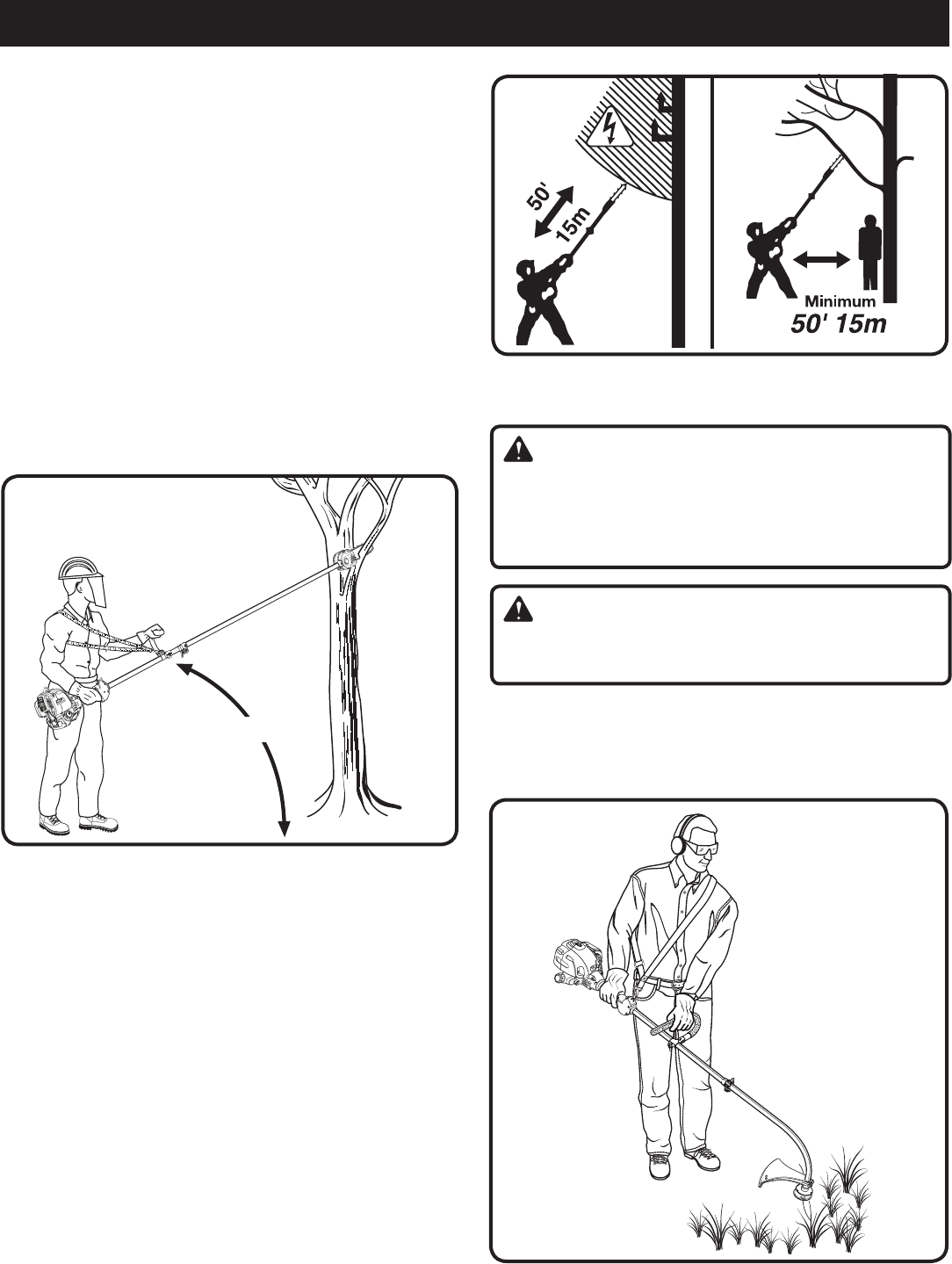
12 13
Fig. 8
n Work slowly, keeping both hands on the saw with a firm
grip. Maintain secure footing and balance.
n Keep the tree between you and the chain while limbing.
Cut from side of tree opposite branch you are cutting.
�n Do not cut from a ladder; this is extremely dangerous.
Leave this operation for professionals.
�n Do not to make the flush cut next to the main limb or trunk
until you have cut off the limb further out to reduce the
weight. Following proper cutting procedures will prevent
stripping the bark from the main member.
�n Do not use the pruner for felling or bucking.
�n To prevent electrocution, do not operate within 50 ft. of
overhead electrical lines.
�n Keep bystanders at least 50 ft. away.
OPERATING THE TRIMMER
See Figure 10.
WARNING:
Always position the unit on the operator’s right side. The
use of the unit on the operator’s left side will expose
the user to hot surfaces and can result in possible burn
injury.
WARNING:
To avoid burns from hot surfaces, never operate unit with
the bottom of the engine above waist level.
Hold the trimmer with your right hand on the rear handle
and your left hand on the front handle. Keep a firm grip with
both hands while in operation. Trimmer should be held at a
comfortable position with the rear handle about hip height.
60° MAXIMUM
OPERATION
LIMBING AND PRUNING
See Figures 8 - 9.
This unit is designed for trimming small branches and limbs
up to 6 in. in diameter. For best results, observe the follow-
ing precautions.
n Plan the cut carefully. Be aware of the direction in which
the branch will fall.
n Branches may fall in unexpected directions. Do not stand
directly under the branch being cut.
n The most typical cutting application is to position the unit
at an angle of 60° or less, depending on the specific situ-
ation, as shown below. As the angle of the pruner shaft
to ground increases, the difficulty of making the first cut
(from the underside of limb) increases.
�n Remove long branches in several stages.
�n Cut lower branches first to allow the top branches more
room to fall.
Fig. 10
Fig. 9
PROPER
OPERATING POSITION



